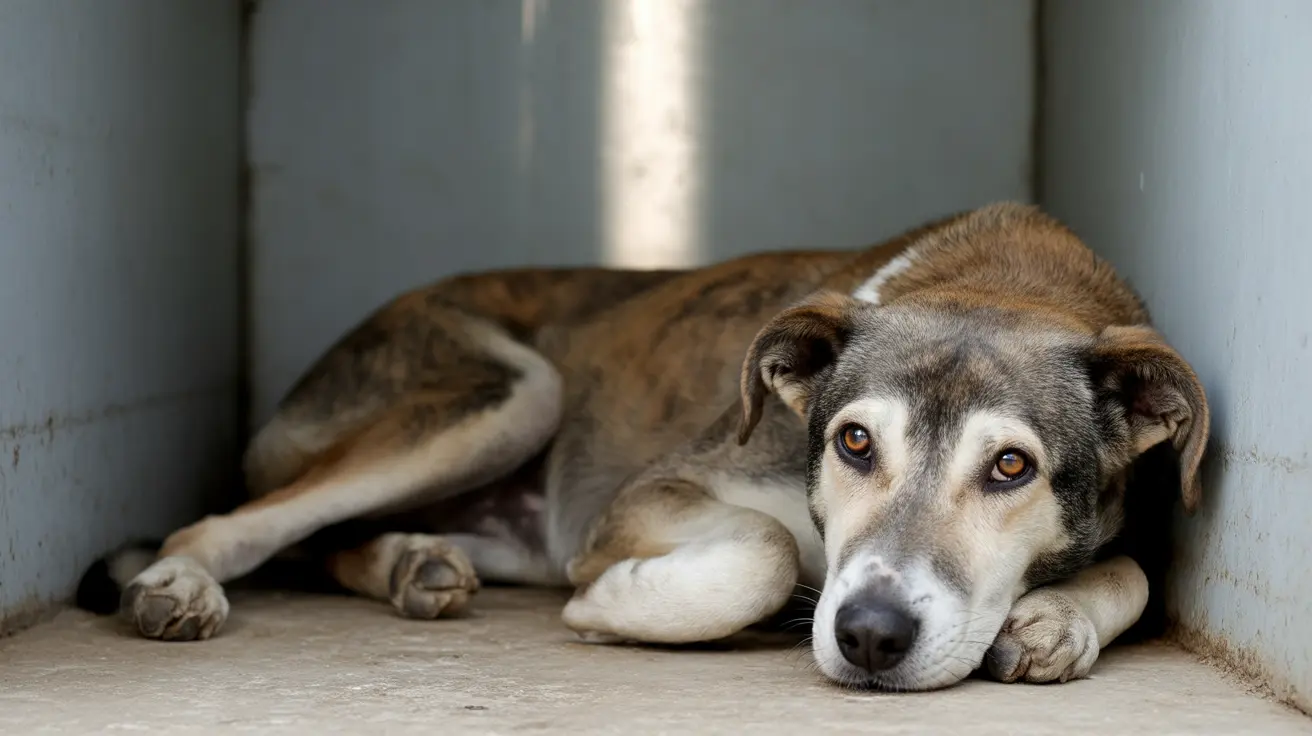Corneal dystrophy in dogs is a complex inherited eye condition that can significantly impact your pet's eye health and quality of life. This comprehensive guide will help you understand what corneal dystrophy is, how it affects dogs, and what treatment options are available to manage this condition effectively.
What is Corneal Dystrophy in Dogs?
Corneal dystrophy is an inherited eye disorder that affects different layers of the cornea, resulting in cloudy patches or opacity in one or both eyes. This condition is non-inflammatory and can progress differently depending on which layer of the cornea is affected. Understanding the specific type of corneal dystrophy your dog has is crucial for proper treatment and management.
Types and Their Characteristics
Epithelial Corneal Dystrophy
This type affects the outermost layer of the cornea, presenting as white or gray opaque patches. While most dogs with epithelial dystrophy don't experience significant discomfort, some may develop mild irritation or surface erosions that can cause pain.
Stromal Corneal Dystrophy
Affecting the middle layer of the cornea, stromal dystrophy is characterized by deposits of fat, cholesterol, or calcium. These appear as gray, white, or silver opacities and typically don't cause pain or inflammation unless severely advanced.
Endothelial Corneal Dystrophy
This most serious form affects the innermost corneal layer and is commonly seen in middle-aged to older dogs. It begins with a bluish haze that can progress to fluid buildup, causing significant discomfort and potential vision loss if left untreated.
Signs and Symptoms to Watch For
Early detection is crucial for managing corneal dystrophy effectively. Common symptoms include:
- Visible cloudiness or haziness in one or both eyes
- Changes in eye color or appearance
- Increased tearing or eye discharge
- Pawing at the eyes or signs of discomfort
- Sensitivity to light
- Redness around the eyes
Diagnosis and Treatment Options
Veterinarians diagnose corneal dystrophy through comprehensive eye examinations and specialized tests. Treatment approaches vary based on the type and severity of the condition:
Mild Cases
- Regular monitoring through veterinary check-ups
- No immediate treatment if asymptomatic
- Protective measures to prevent complications
Advanced Cases
- Hyperosmotic eye drops for fluid reduction
- Topical medications for pain and inflammation
- Surgical intervention in severe cases
- Potential corneal transplantation for qualifying candidates
Prevention and Management
While corneal dystrophy cannot be prevented due to its genetic nature, proper management can help maintain your dog's quality of life:
- Regular veterinary eye examinations
- Prompt attention to any changes in eye appearance or behavior
- Following prescribed treatment plans consistently
- Protecting eyes from injury and irritants
- Maintaining good overall eye hygiene
Frequently Asked Questions
What are the main types of corneal dystrophy in dogs, and how do they affect vision?
There are three main types: epithelial, stromal, and endothelial corneal dystrophy. Each affects different corneal layers and can impact vision differently. Epithelial and stromal types often have minimal vision impact, while endothelial dystrophy can lead to significant vision problems if untreated.
How do I recognize the symptoms of corneal dystrophy in my dog, and when should I seek veterinary care?
Look for cloudiness in the eyes, increased tearing, eye discomfort, or changes in eye appearance. Seek immediate veterinary care if you notice any sudden changes, signs of pain, or if your dog is pawing at their eyes.
What are the best treatment options for advanced cases of corneal dystrophy in dogs, especially endothelial dystrophy?
Advanced cases may require a combination of medical and surgical interventions, including hyperosmotic drops, anti-inflammatory medications, and possibly surgical procedures like thermokeratoplasty or corneal transplantation in severe cases.
Is corneal dystrophy in dogs inherited, and are certain breeds more prone to developing it?
Yes, corneal dystrophy is an inherited condition. Breeds like Boston Terriers, Chihuahuas, Dachshunds, and Springer Spaniels are more prone to endothelial dystrophy, while others like Airedales and Samoyeds are more susceptible to stromal dystrophy.
How can I manage and care for my dog if they have been diagnosed with corneal dystrophy, and what are the long-term implications?
Management includes regular veterinary check-ups, following prescribed treatments, protecting the eyes from injury, and monitoring for changes in symptoms. Long-term implications vary by type and severity, but many dogs maintain good quality of life with proper care and management.
Conclusion
While corneal dystrophy can be concerning for dog owners, understanding the condition and working closely with your veterinarian can help ensure the best possible outcome for your pet. Early detection and consistent management are key to maintaining your dog's eye health and quality of life.






